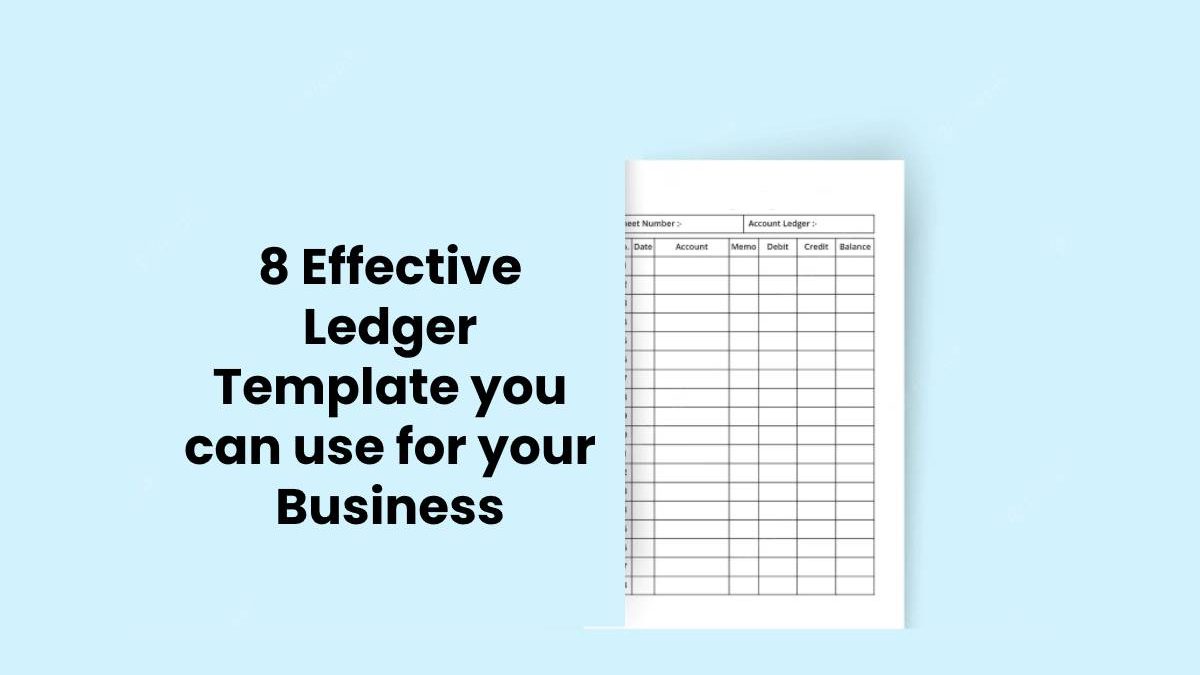8 Effective Ledger Template you can use for your Business
The general ledger is a record of all financial transactions that have ever taken place in your company. If you use a double-entry bookkeeping system, “bookkeeping” entails keeping a ledger template, which is your company’s most important accounting reference.
Table of Contents
Definition of a Ledger Account
A company’s financial activities and statements are recorded and kept in a journal called the ledger. Assets, Deferred Revenue, Accounts Payable, Stockholders, Debt, Equities, Profits, Taxes, Expenses, Income, Loss, Funding, Loans, Contracts, Stocks, Pensions, Wages, etc. are just a few of the many categories that make up a company’s general ledger account. In this article, you will find ledger account templates in Excel, Google Sheets, and PDF format, as well as more information on ledger account format & examples, ledger types, & ledger posting.
Source – https://en.m.wikipedia.org/wiki/Freshbooks
Subcategories of Ledgers
Ledgers can be divided into three distinct categories:
- The Sales Ledgers
- Purchase Ledgers
- General Ledgers
Sales Ledgers
A Sales Ledger is a book where a business records the money made from selling its wares to consumers. Insight into sales and earnings can be gleaned from this register.
Purchase Ledgers
The Purchase Ledger is where an organisation’s suppliers’ purchases are recorded and managed. The amount of money the company forked over to vendors may now be seen.
General Ledgers
Two subsets of General Ledger exist:
- The Nominal Ledger and
- Private Ledger.
Expenses, revenue, depreciation, healthcare, and other related data can be found in the nominal ledger. And a private ledger is where you may find out about things like salary, capital investments, and other financial details that are meant to stay private. The personal ledger is not available to the public.
What does a general ledger look like?
The debit & credit totals in a sample general ledger should balance at all times. For financial statement generation, the ledger is also the repository of all transactional details pertaining to your company’s accounts throughout its existence.
The general ledger records all of your company’s monetary activities across all accounts, so it can be relied upon for reliable financial projections. The financial ledger template can serve as the backbone of your company’s financial database, feeding data into many other financial documents.
To help visualize a standard ledger for recording financial transactions, think about the following:
-
Ledger accounts
This ledger can be subdivided into a number of distinct groups. The following types of accounts fall into these groups:
-
Assets
To put it simply, these are the assets that are wholly under your control and which generate profits. Examples of assets are money, land, tools, machinery, intellectual property, and brand names.
-
Liabilities
Your company’s financial obligations are the money it owes, either now or in the future. Income taxes and employee pay are examples of current liabilities. Credit lines, mortgages, rentals, and bank loans are all examples of future liabilities.
-
Equity
This is the amount by which your company’s assets exceed its liabilities. The term “negative equity” describes a situation in which a company’s liabilities exceed its assets. A company has positive equity if its assets exceed its liabilities.
Whether a company is held privately or publicly by its shareholders, equity might take the form of stock options, ordinary shares, or stocks.
-
Revenue
Income for your company via the sale of goods and/or services. Royalties, rent, sales, and other fees collected from customers are examples of revenue.
-
Expenses
In this context, “expenses” refer to the monetary amounts your company forked out to vendors in return for goods and services. Utilities, transportation, food, and lodging Business Softwares like messaging app , Bookkeeping are just some of the expenses that may add up.
You can find the names of your accounts on your ledger’s opening page. This will be the Chart of Accounts, while an “Account Ledger” refers to the record-keeping for a specific account within the general ledger.
-
Sub-Ledgers
Sub-ledgers within accounts explain the transactions recorded in the main ledgers, such as which accounts paid or received money and which accounts were credited or debited.
Conclusion
It is imperative that you and your accountant have a system in place to track and organise all of your business’s monetary transactions by category in order to have a full picture of the company’s financial health.

